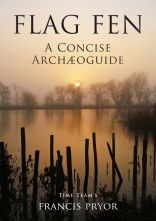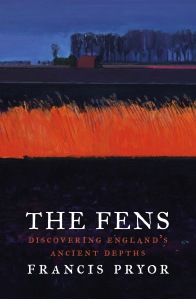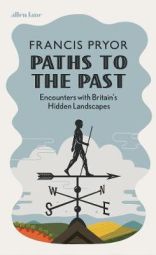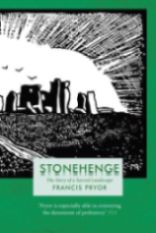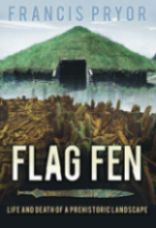Somebody wise once said that you’ve got to be strong to grow old – and how right he or she was. I’d also add: not just strong, but fit and determined, too. It further helps if you can draw on the resources of our wonderful National Health Service, to whose health I shall drink a real or imaginary glass of Prosecco or Cava every day – until my liver packs up. I went under the knife in the Queen Elizabeth Hospital at Kings Lynn on the morning of Sunday October 29th. Before the operation, the anaesthetist explained that I could opt for complete oblivion or a spinal anaesthetic, where I’d feel no pain, but I’d also be aware of what was going on around me. She went on to explain that the spinal block option meant a shorter and less ‘foggy’ period of grogginess after the operation. All of that made sense, and besides, I wanted to experience what was about to happen to me. It’s not every day that one has such a major operation.
Before the operation I asked one of the surgeons if I could have a look at the joint they were removing. I explained that as an archaeologist I had excavated dozens of skeletons and it wasn’t often that one gets given the chance to examine one’s own bones. He asked me what I was interested in and I said it was the ball joint at the head of the thigh bone, or femur. I’d dug lots of them and I wanted to see what mine looked like, and more particularly what the damage, which had showed up quite clearly on the X-ray photo, looked like, in the flesh, as it were. I think my request surprised him, but he smiled and said he’d see what he could do.
Then I was wheeled into the operating theatre and things became a little, but only a little, groggy. At one point I was aware that somebody was hammering something hard into something a bit softer. It sounded remarkably like the noise I make when I’m splitting wood with a metal wedge – or maybe hammering a chisel into a block of wood. It was as if they were hammering a tapering nail into my femur – which was more or less what they were doing, except that the tapering nail was my new prosthetic joint and the precise sound – the precision – of the tapping was important because the surgeon needed to extend my thigh bone by 10mm, to make good the wear-and-tear caused by the worn hip. So he mustn’t knock it in too far. In the event, he got it spot-on and I can now proudly report that both my legs are precisely the same length. Tap tap.
After the operation, the surgeon I’d approached earlier asked me if I still wanted to see the head of my femur. Although I was still a little groggy, I almost jumped off the bed. Yes please, I really did want to see it! He reached down into a small glass beaker or bowl and produced something that I immediately recognised for what it was, but I was surprised (a) because it was smaller than I’d expected and (b) because of its pale pinkish colour. I know it’s completely illogical, but I thought he was going to produce something yellowish brown – the colour of bones on archaeological sites. He brought it across to me and tapped the ball joint with the side of a pair of forceps and it made a soft, almost soggy sort of sound – like he was tapping the outside of an apple. He explained that the soft/soggy surface was a layer of cartilage that covered the bone and lubricated the joint. Then he turned the bone around and immediately I could see a small (little fingernail-sized) shiny area where the cartilage had worn through, exposing the shiny, pink, bone surface beneath. The surgeon tapped the worn area and it made a hard, sharp sound – just like bones on an excavation, when tapped with a trowel. When I saw that worn patch I could see why my hip had become so incredibly painful in the months leading up to the operation.
I seemed to recover quite quickly, although I did collapse the following day when my blood pressure suddenly dipped when I got out of bed. I got over that and things improved so that by Tuesday I had passed the stairs climbing test and was getting ready to be sent home. They then removed the catheter that had been inserted for the operation, and asked me to have a pee. They gave me water – lots of it – and I imagined Niagara Falls and pints of foaming bitter, but to no avail. Nothing flowed. Sahara not Niagara. I wasn’t allowed home. The next day I developed complications: diarrhoea, gastric wind, vomiting, followed by dehydration and low blood pressure. Horrible – and it lasted for four days. After ten days they let me out. I now do my physiotherapy exercises religiously three times a day and take long walks every morning and afternoon. I haven’t taken a pain relief pill for two weeks and although my guts are still recovering, the hip feels fine. In two days’ time I’ll see the surgeon who did the operation for my final check in Kings Lynn. The wound is healing well and I’m already feeling VASTLY improved. Frankly, he and his team worked a miracle and I’m so grateful to them. Long live the NHS!
One final, rather sad, memory. The other beds in the Orthopaedic ward were occupied by four men in their 70s and 80s. All had strong Norfolk accents and three had worked their lives on farms. One morning one man leant back on his pillows and said to nobody in particular: ‘Well, we was all fooled. Looks like nobody knew what was happening.’ ‘You’re right,’ somebody replied. A long silence followed this. I knew from earlier conversations that they’d all voted for Brexit and were starting to regret what they’d done. Let’s hope the NHS survives the inevitable chaos that must lie ahead. The Brexit split is very profound and deep and will take decades to repair: I bitterly regret the cold-blooded way the right-wing media duped honest people into destroying their children and grand-childrens’ future. And believe me, those elderly men had started to realise just what they had done. So sad. So very sad.




